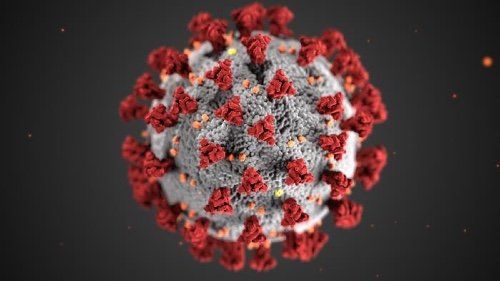Dutch Group Creates CO-RADS Classification System
Expert panel developed six-category system to classify chest CTs and streamline structured reporting around COVID-19.

The BI-RADS and Lung-RADS systems routinely help radiologists classify the severity of findings with breast cancer and lung cancer. Now, a similar system – called CO-RADS – has been developed for assessing the pulmonary involvement of COVID-19 in CT scans.
To help radiologists analyze the likelihood and level of COVID-19 involvement, the Dutch Radiological Society developed a six-category system that could make it easier for providers to identify patients who have significant imaging findings characteristic of COVID-19 involvement and report on them to referring physicians.
The team, led by Mathias Prokop, M.D., Ph.D., and Wouter van Everdingen, M.D. Ph.D., both from the Radboud University Medical Center radiology department in The Netherlands, published their CO-RADS system in Radiology.
“The system fulfills the need for a structured and fast reporting system that decreases ambiguity in the communication with referring physicians and facilitates collection of CT performance data for further research of this worldwide healthcare problem,” the team wrote.
To categorize scans by a set of defined characteristics, eight radiologists read randomly selected chest CT scans from 105 patients who were suspected of COVID-19 infection and who presented to the emergency room between March 14 and March 25, 2020. Patients fell into one of three groups: those with at least one positive real-time polymerase chain (RT-PCR) result within five days after CT, those with one or multiple negative RT-PCR results but a clinical positive COVID-19 diagnosis, and those with one or multiple negative RT-PCR results and a clinical course that wasn’t consistent with COVID-19 or was consistent with a different diagnosis.
Based on their image analyses, 68.2 percent unanimously agreed on the category assignments, and they divided scans into six categories:
CO-RADS 1
A normal CT or a CT with findings or unequivocal non-infectious etiology indicates a very low likelihood of COVID-19 pulmonary involvement. Based on reader consensus, mild or severe emphysema, perifissural nodules, lung tumors, or fibrosis fall into this category.
CO-RADS 2
With CT findings in the lungs that are typical of infectious etiology that aren’t considered characteristic of COVID-19, this category indicates there’s a low level of suspicious for pulmonary COVID-19 involvement. Examples for this category include bronchitis, infectious bronchiolitis, bronchopneumonia, lobar pneumonia, and pulmonary abscess, and features include tree-in-bud sign, centrilobular nodular patterns, lobar or segmental consolidation, and lung cavitation.
CO-RADS 3
CT scans with features that are also found in other viral pneumonias or non-infectious etiologies fall into this category, implying equivocal findings for pulmonary involvement of the virus. Observed findings include perihilar ground-glass, homogenous extensive ground glass with or without sparing of some secondary pulmonary lobules, or ground glass together with smooth interlobular septal thickening with or without pleural effusion.
This category also includes small ground-glass opacities that aren’t centrilobular or aren’t located close to the visceral pleura. You can also see patterns of consolidation compatible with organizing pneumonia without other typical COVID-19 findings.
CO-RADS 4
This category indicates a high level of suspicion of COVID-19 pulmonary involvement. CT findings are characteristic for COVID-19, but they also show overlap with other viral pneumonias. The findings are similar to those identified in CO-RADS 5, but they aren’t located in contact with visceral pleura or are located strictly unilaterally. Additionally, findings are in a predominant peribronchovascular distribution or they’re superimposed on severe diffuse pre-existing pulmonary abnormalities.
CO-RADS 5
CT scans that fall into this category raise a high level of suspicious for COVID-19 pulmonary involvement. These scans must include: ground-glass opacities (with or without consolidation) in lung regions close to visceral pleural surfaces, including the fissures, and in a multifocal bilateral distribution. Additionally, at least one confirmatory pattern that aligns with the temporal evolution of the disease must be present, such as the crazy paving pattern that has been described during the course of the disease.
In addition, these scans exhibit opacities that resemble organizing pneumonia, such as reverse halo signs or ground glass with extensive subpleural consolidations and air bronchograms. The team added you could also see subpleural curvilinear bands or bands of ground glass with or without consolidation in a tethered, arching pattern with small connections to the pleura.
CO-RADS 6
These scans indicate proven COVID-19 involvement, supported by a positive RT-PCR test.
By using the categorization system, the team was able to distinguish between patients who had positive RT-PCR tests and those with negative ones with an average AUC of 0.91. The average AUC increased to 0.95 with a clinical diagnosis of COVID-19 infection, and the number of positive cases rose as radiologists assigned higher CO-RADS values.
The team noted the classification system was designed in a geographic area with high COVID-19 prevalence, acknowledging that the level of viral incidence could impact the accuracy of the CO-RADS system.
Even with this limitation, however, the team asserted, the CO-RADS system could help standardize communication and reporting around chest CT scans that look for COVID-19-related lung involvement.